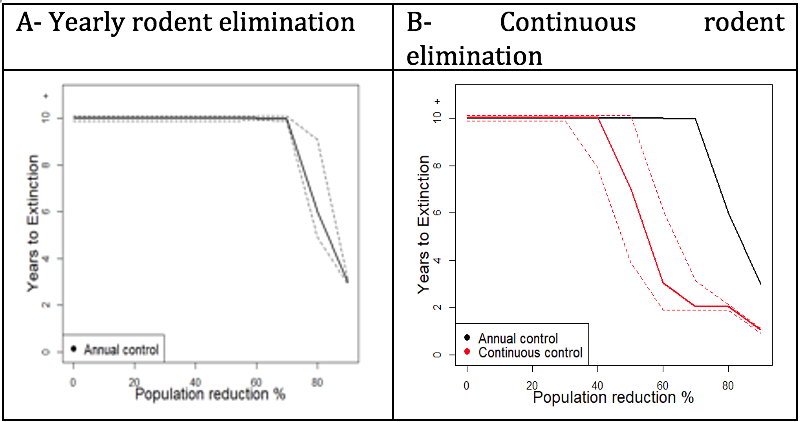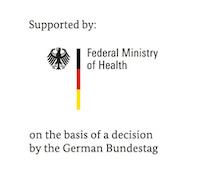Modelling
Reducing rodent abundance does not only decrease the probability that a susceptible human being is exposed to an infected rodent - we hypothesize that it will also decrease the probability of LASV transmission between rodents. In order to assess the potential of various rodent control strategies on LASV prevalence in rodents, we developed a mathematical simulation model for annual density control, continuous density control and hypothetical rodent vaccination. Field data like age and antibody status in the rodent population were used to parametrize an agent-based SIR model (Susceptible- Infectious-Recovered). Empirically we found a significant negative effect of rodent control on seroprevalence in rodents, but this effect was small (5% reduction per year) considering the effort.
The mathematical model suggests that:
- A- A yearly rodent elimination could result in LASV extinction if the rodent populations are reduced by at least 95% for three years
- B- A continuous rodent elimination could result in LASV extinction if the rodent populations are reduced by at least 70% for two years
These empirical field data and model simulations results can serve as a guide for determining how long and frequent rodent control should be done in order to eliminate Lassa virus in rural villages.

Related key publications:
Evaluation of rodent control to fight Lassa fever based on field data and mathematical modelling
- Mariën J, Borremans B, Kourouma F, Baforday J, Rieger T, Günther S, Magassouba N, Leirs H, Fichet-Calvet E
- Emerg Microbes Infect. 2019;8(1):640-649. doi: 10.1080/22221751.2019.1605846



![Logo Deutsche Forschungsgemeinschaft (DFG) [Translate to English:] Logo DFG](/fileadmin/media/Allgemeines_und_Platzhalter/Logo/Logo_DFG.png)





